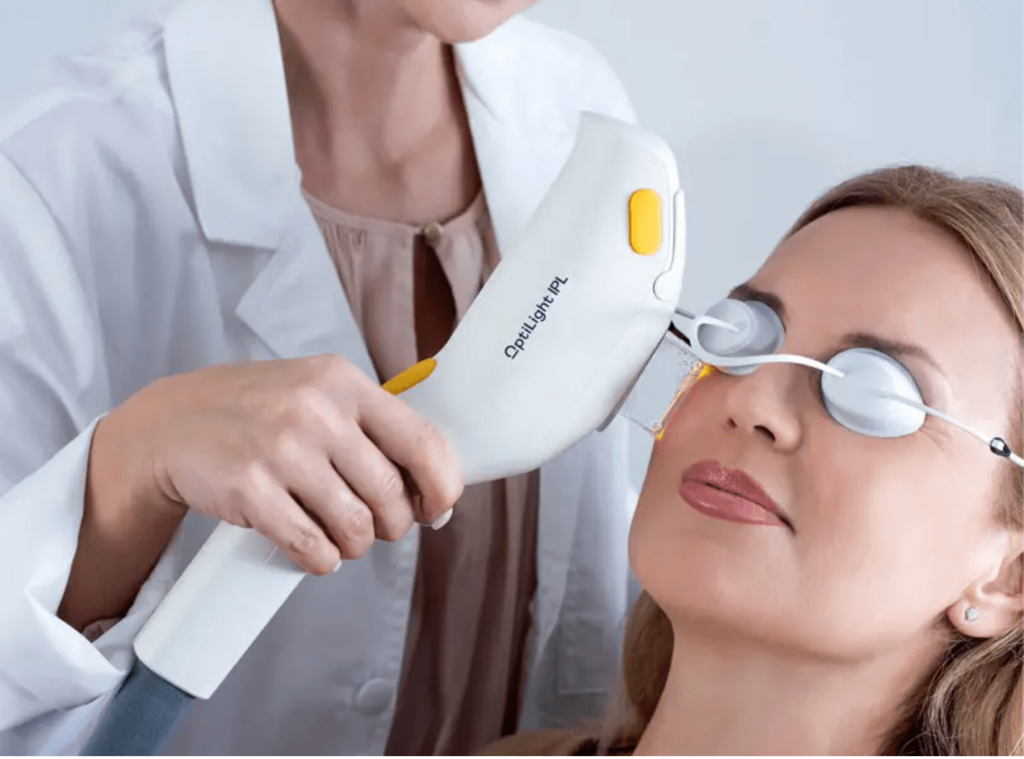Planning for IPL
When you have dry eye, you deserve treatment that can help you feel relief. Finding an appropriate dry eye therapy for your unique eyes can involve a combination of treatments, from artificial tears to in-office technology.
One option for severe dry eye is IPL. The treatment can improve symptoms for patients with evaporative dry eye problems, including meibomian gland dysfunction (MGD). While IPL can help many patients, knowing if your treatment is covered can influence your decision to seek treatment.
So, what is IPL? How is it different from other forms of dry eye therapy? And is IPL covered by insurance? Read on to learn more.
What Is IPL?
Dry eye affects millions of Americans. When your eyes are unable to produce enough tears or the quality of your tears is lacking, it can cause uncomfortable symptoms. Severe dry eye can also impact vision and eye health long-term.
The symptoms can vary, as your unique eyes can affect how you experience symptoms. You may also notice symptoms change in intensity. Generally, the most common symptoms of dry eye include:
- Burning or stinging eyes
- Blurry vision
- Excessively watery eyes
- Feeling something foreign in your eyes
- Gritty or scratchy eyes
- Redness
- Sensitivity to light
- Stringy mucus
Intense pulsed light (IPL) therapy is a treatment for dry eye. The noninvasive procedure uses gentle pulses of light to target the skin around the eyes. The light energy is absorbed by blood vessels. Light warms the meibomian glands—the oil glands located along the edge of the eyelids. The oil component in tears prevents evaporation and keeps the eye’s surface smooth.
The energy reduces inflammation and melts oil (meibum) clogged in the glands. IPL therapy also reduces bacterial growth around the eyes. Decreasing factors that can lead to infection can help protect tear production and prevent conditions that worsen dry eye, including blepharitis.
Depending on symptom severity, patients may notice improvement after the first or second session. However, it can take up to 4 treatments before the treatment is effective. Generally, treatment providers recommend additional monthly treatments to ensure optimal results.
OptiLight by Lumenis
OptiLight by Lumenis is the first and only IPL FDA-approved for dry eye management. The treatment is safe, gentle, and backed by more than 20 clinical studies. OptiLight uses precise light pulses to reduce inflammation, improve tear break-up time, and increase meibomian gland functionality.
IPL therapy is intended for patients suffering from severe symptoms due to evaporative dry eye. Patients with aqueous-deficient dry eye (poor tear quantity rather than poor quality) are not candidates for IPL.
Ultimately, your eye doctor is the only person who can determine whether IPL is appropriate for you. Book a dry eye consultation to discuss dry eye therapy and discover if you’re a good candidate for OptiLight by Lumenis.

IPL vs. LipiFlow vs. iLux
Focused thermal treatment is a common theme among dry eye therapy technology, including IPL, LipiFlow, and iLux. However, while these dry eye therapies focus on supporting meibomian gland function, there are differences.
- The LipiFlow thermal pulsation device massages the inner and outer eyelids while applying gentle heat. Both eyes are treated simultaneously, with treatment lasting approximately 12 minutes.
- The OptiLight IPL is a light-based treatment. The device does not directly touch the eyelid. Instead, light penetrates the skin to warm the meibomian glands.
- Systane iLux uses a handheld thermal pulsation instrument to deliver warmth and gentle pressure to the inner and outer eyelids. The device is applied to each eye separately, with treatment lasting 8-12 minutes.
What’s Covered by Insurance?
Most technology-based thermal treatments for meibomian gland dysfunction are not covered by insurance. In addition, IPL therapy for skin (also known as a photofacial) is considered a cosmetic procedure. Its early history as a dermatological therapy creates another obstacle for insurance coverage as the distinct services share similar technology.
Which dry eye treatments are covered usually depends on your provider and insurance plan. Some providers may offer partial coverage for select services, but typically IPL, LipiFlow, and iLux are not covered. When considering thermal treatment for dry eye, connect with your provider to learn more about your coverage for dry eye therapy.
Financing
Financing can help you manage the costs of eye care so you can receive the treatment you need when you need it. Some optometrists offer in-house financing plans, but other options are available.
When affordability is complicating your care, talk to your optometrist. Your eye care team can work with you to find a suitable option. Financing plans can help remove barriers to many technology-driven treatments.
Discuss Your Plan Today
Specialty Eye has been awarded as one of the top dry eye practices in the United States every year since 2018. Upholding our legacy inspires us to invest in innovative technology like IPL therapy. We’re passionate about eye health and are committed to delivering results. Your eyes and symptoms are unique, so you deserve personalized treatment.
Visit us today to discuss your dry eyes. We can determine if IPL is appropriate for you. We want you to feel comfortable with your care. Talk to us about your goals, and we’ll recommend options for your needs. Book an appointment at Specialty Eye today!




